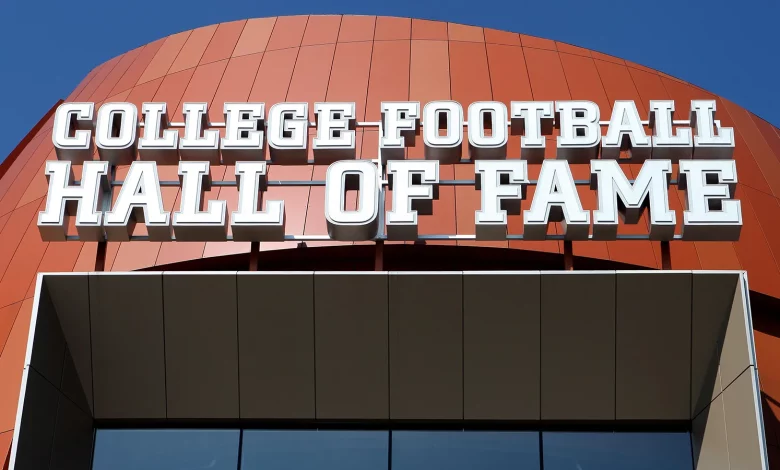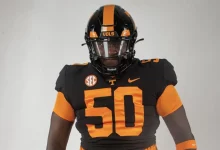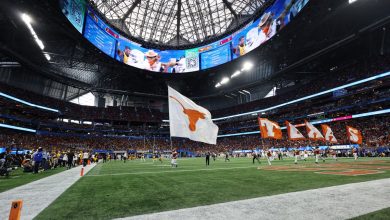The 12 Schools With Most College Football Hall Of Fame Players

Most College Football Hall of Famers by School: A Legacy of Legends
When it comes to the legacy of college football, no honor is more prestigious than induction into the College Football Hall of Fame. Reserved for the elite few who shaped the game, whether as players or coaches, it serves as a lasting monument to brilliance on the gridiron. And while individual greatness is at the heart of the Hall, the schools behind these legends share in the glory, forming a rich tapestry of tradition, dominance, and influence.
The Hall of Fame, located in Atlanta, Georgia, stands as a living tribute to the schools that helped define the sport. And as college football evolves—with realignment, NIL, and expanded playoffs—the roots of greatness remain grounded in the legends of the past. Below, we explore the schools that have produced the most College Football Hall of Famers, offering a window into the sustained excellence of the sport’s most storied programs.
1. Notre Dame – 53 Inductees
The Fighting Irish top the list, and it comes as no surprise. Notre Dame’s mystique stretches back more than a century, intertwined with national championships, Heisman winners, and a national following that transcends geography. From Knute Rockne, George Gipp, and Paul Hornung to modern legends like Tim Brown, Notre Dame’s impact on the college game is unmatched. As an independent for most of its history, the Irish did it without a conference, relying on rivalries, prestige, and NBC Saturdays to dominate the narrative of college football. Their Hall of Fame tally reflects that grandeur, leading the nation with 53 enshrinees.
2. Michigan – 47 Inductees
The winningest program in college football history also stands tall in the Hall of Fame. With 47 inductees, Michigan’s success spans multiple eras. Names like Benny Friedman, Tom Harmon, and Charles Woodson define different generations of Wolverine dominance. From the Mad Magicians of the 1940s to Bo Schembechler’s physical dynasties and Jim Harbaugh’s modern playoff contenders, Michigan’s tradition is as deep as it is successful. The Maize and Blue aren’t just about wins—they’re about impact, legacy, and enduring relevance.
3. USC – 43 Inductees
The University of Southern California has long been a gateway for stars headed to both college greatness and NFL stardom. Their 43 Hall of Famers include running back royalty like Marcus Allen, O.J. Simpson, and Mike Garrett, as well as dominant defenders like Ronnie Lott and Junior Seau. USC’s place in college football lore is centered around style, swagger, and championships. With multiple Heisman winners and national titles, the Trojans’ impact on the sport is particularly strong on the West Coast, where they’ve served as the gold standard for decades.
4. Ohio State – 40 Inductees
One of the nation’s most dominant programs across both the Big Ten and the national landscape, Ohio State boasts 40 Hall of Fame members. From the days of Chic Harley and Les Horvath to modern icons like Orlando Pace and Archie Griffin, the Buckeyes have always been at the center of college football’s power structure. Their ability to reload with elite talent, regardless of era, has ensured Ohio State’s place among the top Hall-producing schools. The school’s emphasis on fundamentals, physicality, and NFL development continues to attract top-tier talent.
5. Army – 38 Inductees
Though not the powerhouse it once was, the U.S. Military Academy at West Point was a dominant force in the mid-20th century. With legends like Doc Blanchard, Glenn Davis, and Red Blaik, Army fielded teams that captured national championships and commanded respect. The 1940s especially were the golden era, when Army was virtually unbeatable. Despite a decline in modern relevance, the program’s historical significance and its remarkable run during wartime America ensure its legacy is preserved through 38 Hall of Famers.
6. Yale – 29 Inductees
Before the SEC and the Big Ten ruled college football, Ivy League programs like Yale set the standard. With 29 Hall of Famers, the Yale Bulldogs still rank among the top in history, thanks to early legends like Walter Camp (the father of American football) and Amos Alonzo Stagg. Yale dominated the sport’s formative years, capturing national titles and shaping the rules, strategy, and structure of the game. Though the school no longer competes at the top level, its historic contribution is undeniable.
7. Alabama – 28 Inductees
The Crimson Tide have built a dynasty that spans generations. From Bear Bryant’s iron rule to Nick Saban’s modern juggernaut, Alabama has consistently churned out greatness. Hall of Famers like Don Hutson, Joe Namath, and Lee Roy Jordan paved the way, and future candidates like Derrick Thomas and Julio Jones may soon follow. The Tide’s 28 inductees reflect both a deep history and a program that has become synonymous with excellence. Titles, tradition, and toughness are the hallmarks of Bama football—and the Hall of Fame count confirms it.
8. Oklahoma – 26 Inductees
From the Bud Wilkinson era to the offensive revolutions under Barry Switzer, Bob Stoops, and now Brent Venables, the Oklahoma Sooners have maintained a culture of excellence. Their 26 Hall of Famers include offensive stars like Billy Sims and Steve Owens, as well as coaching legends who changed the game. Oklahoma’s place in history is anchored in dominance, whether it’s national championships, unbeaten streaks, or explosive offenses. The Sooners’ consistency has made them a Hall of Fame fixture.
9. Penn State – 25 Inductees
“Linebacker U” has long been a cradle for Hall of Fame-level defensive talent. Penn State’s 25 inductees include Jack Ham, Shane Conlan, and of course, Joe Paterno, the iconic coach who spent nearly half a century in Happy Valley. Known for producing fundamentally sound, tough, and smart football players, Penn State has been a consistent presence on the national stage. Their Hall of Fame tally reflects the school’s blue-collar values and commitment to both performance and character.
10. Minnesota – 24 Inductees
A surprising name to some, the Golden Gophers of Minnesota were once a powerhouse. With national titles in the 1930s and early 1940s, and standout players like Bronko Nagurski and Bruce Smith, Minnesota’s early impact on the sport remains significant. Though they haven’t maintained elite status in recent decades, the foundation laid during their heyday lives on through 24 Hall of Fame selections. It’s a reminder of how college football’s landscape has evolved.
Rounding Out the Top Programs
- Nebraska (22) – The Cornhuskers dominated under Tom Osborne, producing stars like Johnny Rodgers and Dave Rimington. Their strength in the ’70s through the ’90s earned them a major spot in Hall of Fame lore.
- Tennessee (21) – From Peyton Manning to Reggie White, Tennessee’s Hall of Fame talent reflects a program that was once the standard in the SEC East.
- Georgia (20) – Legends like Frank Sinkwich, Champ Bailey, and Herschel Walker make the Bulldogs one of the most iconic programs in the South.
- Texas (19) – The Longhorns have produced all-time greats like Earl Campbell, Tommy Nobis, and Ricky Williams, cementing their status as a historic juggernaut.
- Michigan State (18) – With Hall of Famers like Bubba Smith and George Webster, the Spartans’ rich tradition of excellence spans multiple decades.
- Florida State (17) – The rise of FSU under Bobby Bowden catapulted the program into national relevance, producing Hall of Famers on both sides of the ball.
- Florida (15) – Gators legends like Steve Spurrier and Jack Youngblood anchor a proud history that continues to add to its Hall of Fame legacy.
The Hall Beyond the Powerhouses
While the power programs dominate the headlines, the College Football Hall of Fame also honors greatness from HBCUs, Division II, and smaller programs:
- Grambling State – Led by the legendary Eddie Robinson, Grambling has produced over a dozen Hall of Famers, showcasing the talent pipeline that HBCUs provided for decades.
- Mount Union and North Dakota State – Dominant at the FCS and D-III levels, they’ve produced coaches and players who’ve shaped football far beyond their classification.
- Ivy League Schools like Harvard, Princeton, and Dartmouth maintain strong representation from the early era of the sport.
Legacy and Longevity
The College Football Hall of Fame isn’t just a shrine to statistics—it’s a monument to influence. Schools with multiple inductees have shown not only consistent success but also an ability to shape the game, develop leaders, and push the sport forward. The stories told in the Hall are those of resilience, innovation, excellence, and pride. Every inductee adds another brick to their school’s legacy, whether they were a bruising fullback in 1920 or a modern-day dual-threat quarterback.
As college football continues to evolve, the Hall of Fame remains a reminder of where the game has been and the schools that carried it forward. In this pantheon of greatness, a handful of programs stand tallest—not just because of wins, but because of the legends they’ve produced.
Notre Dame may lead the pack, but every school on this list has played a vital role in shaping the soul of Saturday afternoons. And as long as the game lives on, so too will the legacies of the schools that built it, one Hall of Famer at a time.









